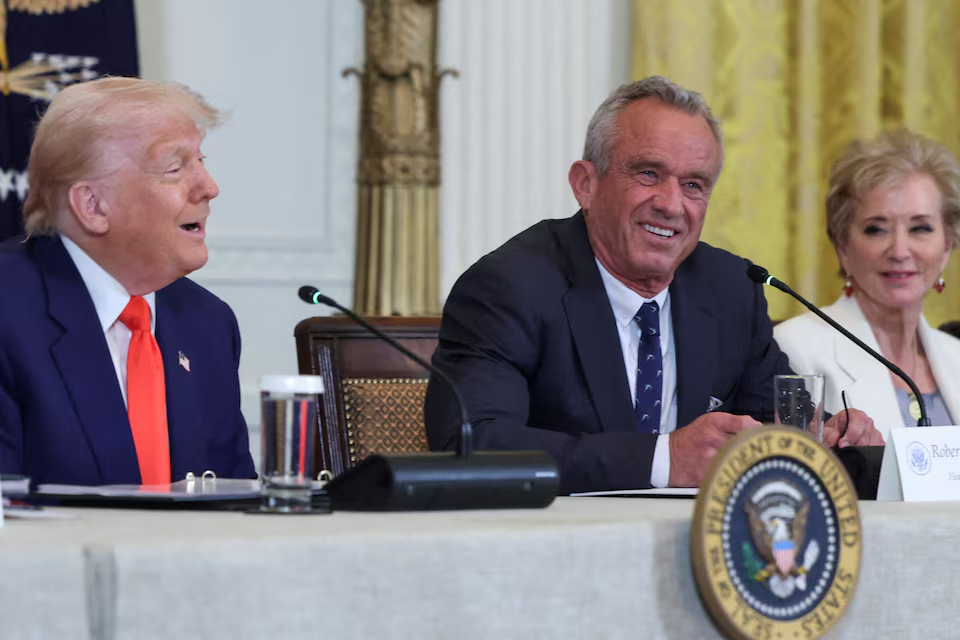MAHA Takes Aim at Kids’ Food Ads, Can Industry Pressure Be Overcome?
- Aug 30
- 3 min read
30 August 2025

A wave of concern about childhood health is building within the administration as an influential commission urges a fresh look at how food is marketed to children. The Make America Healthy Again (MAHA) Commission, established by President Donald Trump and led by Robert F. Kennedy Jr., is poised to recommend new restrictions on advertisements that push unhealthy food to young audiences. A draft of its upcoming report criticizes the billions of dollars the food industry spends every year targeting ads at children and urges agencies to explore industry guidelines that curb such marketing efforts.
The MAHA Commission’s work stems from a broader focus on what its supporters describe as a national health crisis among children, including rising rates of obesity, chronic illness, and poor nutrition. The commission sees marketing to children as a significant contributor to these trends. Their report suggests that federal regulators such as the Federal Trade Commission be encouraged to explore guidelines targeting how certain unhealthy foods are promoted, particularly by limiting misleading imagery or claims aimed at young viewers.
Yet the commission’s recommendation faces a powerful barrier: industry pushback. Food industry giants including Coca‑Cola, PepsiCo, Mondelēz, and McDonald’s have intensified their lobbying efforts since early 2025. According to disclosures, these companies spent a combined $12.5 million in the first half of the year, up from $11.3 million in the same period a year earlier, with a portion of that expenditure devoted to countering MAHA’s proposals. McDonald’s alone disclosed at least $1.67 million in lobbying costs so far, with discussions spanning nutrition policy, labeling, and the commission’s report,.
This surge in lobbying underscores both the industry’s defensive strategy and the broader dynamic at play. MAHA’s push for voluntary restrictions echoes past federal attempts to rein in food marketing to children and those efforts have floundered before. Public health experts and nutrition researchers warn the commission’s recommendations could face entrenched resistance, much as a similar initiative by the Federal Trade Commission did in 2011.
Compounding the challenge is the limited impact of existing voluntary measures. The Children’s Food and Beverage Advertising Initiative (CFBAI) is the industry's principal self‑regulation program, pledging not to advertise directly to children under six and to promote only healthier food to children under thirteen. In practice, however, critics argue the program is riddled with loopholes. Jennifer Harris, a research advisor at the University of Connecticut, says the initiative's promise has "so many loopholes that it is basically meaningless" The CFBAI’s leader, Daniel Range, disputes that characterization, asserting the program has produced "observable, meaningful changes" in how companies advertise to children.
Public health scholars augment this critique by highlighting how pervasive marketing influences shape children’s eating habits. Nick Freudenberg, a public health professor, notes U.S. protections fall short compared to regions like the European Union or parts of Latin America, where stricter regulations limit how unhealthy food is marketed to minors. He doubts meaningful change will emerge unless there is a significant policy shift.
Still, MAHA appears committed to turning that tide. Since its first report in May, which already spotlighted the crisis of ultra‑processed food consumption among children, the commission has signaled continued momentum. The draft for the second report continues that focus, suggesting that agencies consider curtailing certain advertising approaches and tackle deceptive messaging aimed at kids.
The stakes are high. Children are among the most impressionable consumers, and billions in advertising dollars are directed toward them through TV commercials, social media campaigns, and product packaging. If MAHA’s recommendations take root, they could reshape not only regulatory policy in the U.S. but also the broader equilibrium of marketing practices balancing public health goals against corporate interests.
For now, industry opposition looms large, driven by entrenched advertising strategies and a willingness to mobilize substantial lobbying power. Whether MAHA’s voluntary guidelines can prevail and whether they can deliver real change remains to be seen. But the debate it has sparked reinvigorates a long-standing conversation about what kind of protection children should be afforded from aggressive marketing of unhealthy food.



Comments